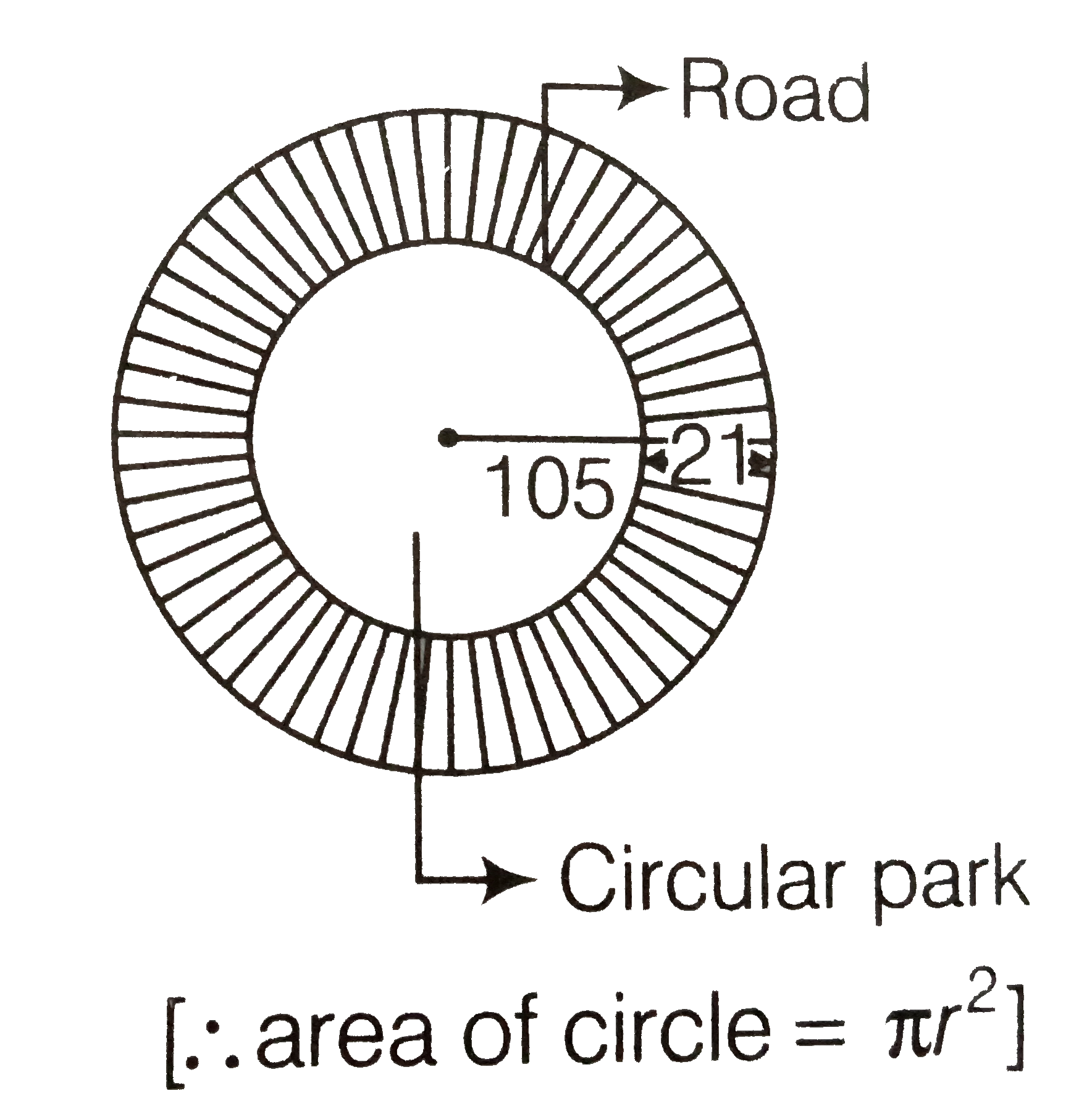A road is 10 m wide. Its radius of curvature is 50 m . The outer edge is above the lower edge by a distance of 1.5 m . This road is most suited for the velocity
8.5ms−1
6.5ms−1
5.5ms−1
none of these
The correct Answer is:A
To solve the problem, we need to determine the most suited velocity for a vehicle on a banked road given the width of the road, the radius of curvature, and the height difference between the outer and inner edges.
1. Identify the Parameters:
- Width of the road (w) = 10 m
- Radius of curvature (R) = 50 m
- Height difference (h) = 1.5 m
2. Calculate the Banking Angle (θ):
The banking angle can be found using the relationship between the height difference and the width of the road:
tan(θ)=hw=1.510=0.15
To find θ, we take the arctangent:
θ=tan−1(0.15)
3. Establish the Forces:
For a vehicle on a banked curve, the forces acting on it are:
- Normal force (N)
- Gravitational force (mg)
- Centripetal force required for circular motion (mv2R)
The normal force can be resolved into two components:
- Vertical component: Ncos(θ)=mg
- Horizontal component: Nsin(θ)=mv2R
4. Set Up the Equations:
From the vertical force balance:
Ncos(θ)=mg(1)
From the horizontal force balance:
Nsin(θ)=mv2R(2)
5. Divide Equation (1) by Equation (2):
This gives us:
Ncos(θ)Nsin(θ)=mgmv2R
Simplifying, we find:
cot(θ)=gRv2
Rearranging gives:
v2=gRcot(θ)
6. Substituting for Cotangent:
Since cot(θ)=1tan(θ):
v2=gR1tan(θ)
7. Substituting Known Values:
Using g=10m/s2, R=50m, and tan(θ)=0.15:
v2=10×50×10.15
v2=500×10.15=500×10015=5000015≈3333.33
Taking the square root:
v≈√3333.33≈57.74m/s
8. Final Result:
The most suited velocity for the vehicle on the banked road is approximately 5√3m/s.
- Width of the road (w) = 10 m
- Radius of curvature (R) = 50 m
- Height difference (h) = 1.5 m
The banking angle can be found using the relationship between the height difference and the width of the road:
tan(θ)=hw=1.510=0.15
To find θ, we take the arctangent:
θ=tan−1(0.15)
For a vehicle on a banked curve, the forces acting on it are:
- Normal force (N)
- Gravitational force (mg)
- Centripetal force required for circular motion (mv2R)
- Vertical component: Ncos(θ)=mg
- Horizontal component: Nsin(θ)=mv2R
From the vertical force balance:
Ncos(θ)=mg(1)
From the horizontal force balance:
Nsin(θ)=mv2R(2)
This gives us:
Ncos(θ)Nsin(θ)=mgmv2R
Simplifying, we find:
cot(θ)=gRv2
Rearranging gives:
v2=gRcot(θ)
Since cot(θ)=1tan(θ):
v2=gR1tan(θ)
Using g=10m/s2, R=50m, and tan(θ)=0.15:
v2=10×50×10.15
v2=500×10.15=500×10015=5000015≈3333.33
Taking the square root:
v≈√3333.33≈57.74m/s
The most suited velocity for the vehicle on the banked road is approximately 5√3m/s.
Similar Questions
A road is 8 m wide. Its radius of curvature is 40 m. The outer edge is above the lower edge by a distance of 1.2 m. This road is most suited for a velocity of
View SolutionA convex mirror of radius of curvature 1.6m has an object placed at a distance of 1m from it. The image is formed at a distance of
View SolutionThe radius of the curved road on a national highway is R. The width of the road is b. The outer edge of the road is raised by h with respect to the inner edge so that a car with velocity v can pass safe over it. The value of h is
View SolutionA motor cyclist moving with a velocity of 72 km/hour on a flat road takes a turn on the road at a point where the radius of curvature of the road is 20 meters . The acceleration due to gravity is 10m/sec2. In order to avoid skidding, he must not bend with respect to the vertical plane by an angle greater than
View SolutionA ball is thrown upward at an angle of 45∘ with the horizontal and lands on the top edge of a builing that is 20 m away. The top edge is 10 m above the throwing point. The initial speed of the ball in metre/second is (take g =10m/s2)
View SolutionA train is running at 20 m/s on a railway line with radius of curvature 40,000 metres. The distance between the two rails is 1.5 metres. For safe running of train the elevation of outer rail over the inner rail is (g=10m/s2)
View SolutionA road which is 7 m wide surrounds a circular park whose circumference is 352 m. Find the area of road.
View SolutionA road which is 7 m wide surrounds a circular park whose circumference is 352 m. Find the area of road.
View SolutionThe edge of a cube is a=1.2×10−2m. Then its volume will be recorded as:
View SolutionA circular park is surrounded by a road 21 m wide. If the radius of the park is 105 m, then find the area of the road.

View Solution
